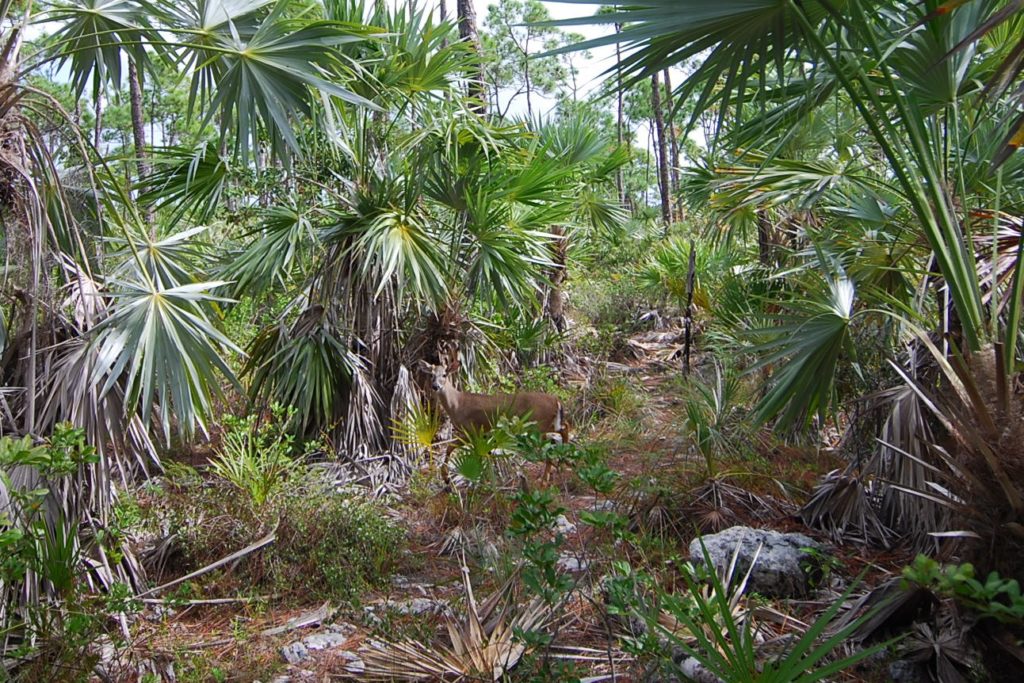
Key Thatch
Leucothrinax morrisii
This Key Deer is surrounded by Key Thatch in the Key Deer National Refuge.
Key Thatch is tolerant of salt air and some salt water flooding. Dry or moist fertile soil is best, although the plant must be fully established in order to take a long dry period. Key Thatch, also known as Brittle Thatch Palm and Silver Thatch Palm does well up to Palm Beach County. It is very slow growing and will take up to ten years to begin growing a trunk.
The leaves, which are dark green above and silvery white below, are three feet wide and six feet total length with the petiole. The total width of the palm may be six feet with drooping fronds coming off of the four inch diameter trunk. Trees in the wild may reach thirty feet, but this is rare.
The lovely palmate leaves, narrow trunk and bright white berries hanging from a long panicle make this a real texture enhancer for the landscape. Just when you tire of oval leaves, throw in a few Key Thatch and the landscape explodes. Birds and squirrels love the non poisonous fruit and bees visit the many small white flowers. The leaves are the caterpillar food for the Monk Skipper Butterfly.
Try a mixture of several Key Thatch along with Florida Thatch Palm, Silver Palm, Buccaneer Palm, Lignum Vitae, Joewood, Rhacoma, Quailberry, Lopsided Indian and Dwarf Fakahatchee Grass, Slash Pine, Locustberry, Cinnecord, Gumbo Limbo and other low wildflowers and Key plants. It can even take moderate shade along the edge of the planting.